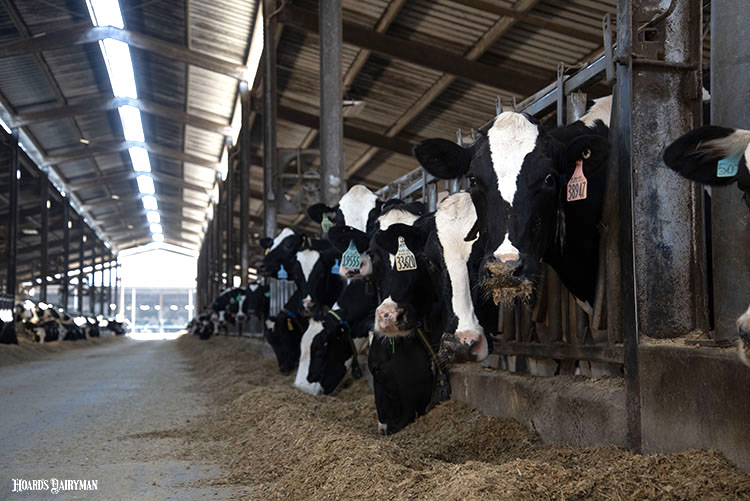
First, before we think about ideas for this summer, now is the time to jot down a few things that you want to be sure to put in place before next summer. Perhaps a few plans and notes entered into your calendar for March 1 of next year would be smart. You have to start early if you have ideas related to adding fans or plumbing projects for more drinkers or sprinklers.
What can you do now? I would suggest starting with intake. Many of the negative impacts on production, components, and cow health are because of lower intake. Are there ideas you can implement now to improve intake? Is there any roughage that can be shifted to a higher energy fiber like soybean hulls? How are the knives in your mixer? If you have a ration that is somewhat bulky with longer forage particles, tightening up that mix could stimulate some quick intake. Using a Penn State Particle Separator, be sure that the top shelf component is not excessive and that the combined total of the top and second shelves is not higher than needed. Depending on the starch and fiber levels in the diet, making the ration “shorter” via extra and more aggressive mixing is usually safer than reducing the forage content of the diet. In general, the industry is finding that shorter diets are safer than previously thought.
Next, are there quick and easy plumbing projects that can help? Parlor exit cooling always seems to be the easiest and perhaps the most effective cow cooling technique. Since this is usually in only two specific and limited spots on the dairy, a basic system can probably be in place by day’s end after a quick trip to the hardware store. More complicated systems can be planned for next summer with things like electric eyes and electric valves. Something more akin to a garden hose with holes in it can help by this afternoon!
Cooling on the feed lane is certainly more complicated. If you have pens of cows locked up for breeding late enough in the morning that they experience significant heat stress, consider a water tank and a pump on a truck to drive by and soak the cows during the lockup. No plumbing required! A poly tank on the back of a flatbed truck will suffice. This is a real solution that can be quickly employed.
Lastly, there may be some diet manipulations that can have a quick impact. If butterfat has slipped during the dog days of summer, perhaps adding extra sodium bicarb or potassium carbonate can elevate the dietary cation-anion difference (DCAD) of the diet and boost milkfat levels. Similarly, if you had previously raised starch levels to address early-summer heat stress, it could be that adding more of a highly digestible fiber source like soybean hulls or beet pulp might be a better fit.
You can also consider the fatty acid balance in the diet. Has this been fine-tuned for summer production? By varying the products and sources used, the diet can be better designed to support milk production, body condition support, reproduction, or milkfat production. In general, the fatty acid balance used in January is probably not the best approach for August.
If you are hot today and you spent all day with hot cows, think of two things. First, what can I do now to help? Second, what do I really need to remember to do before next summer to be sure that the cows have a better summer next year than they are experiencing now? Remember to make a note on March 1, 2024, if not sooner, to order some fans, plan for more water lines, drill a new well, buy a larger storage tank, or take other heat abatement steps. The cows will appreciate the effort and so will your bottom line.








